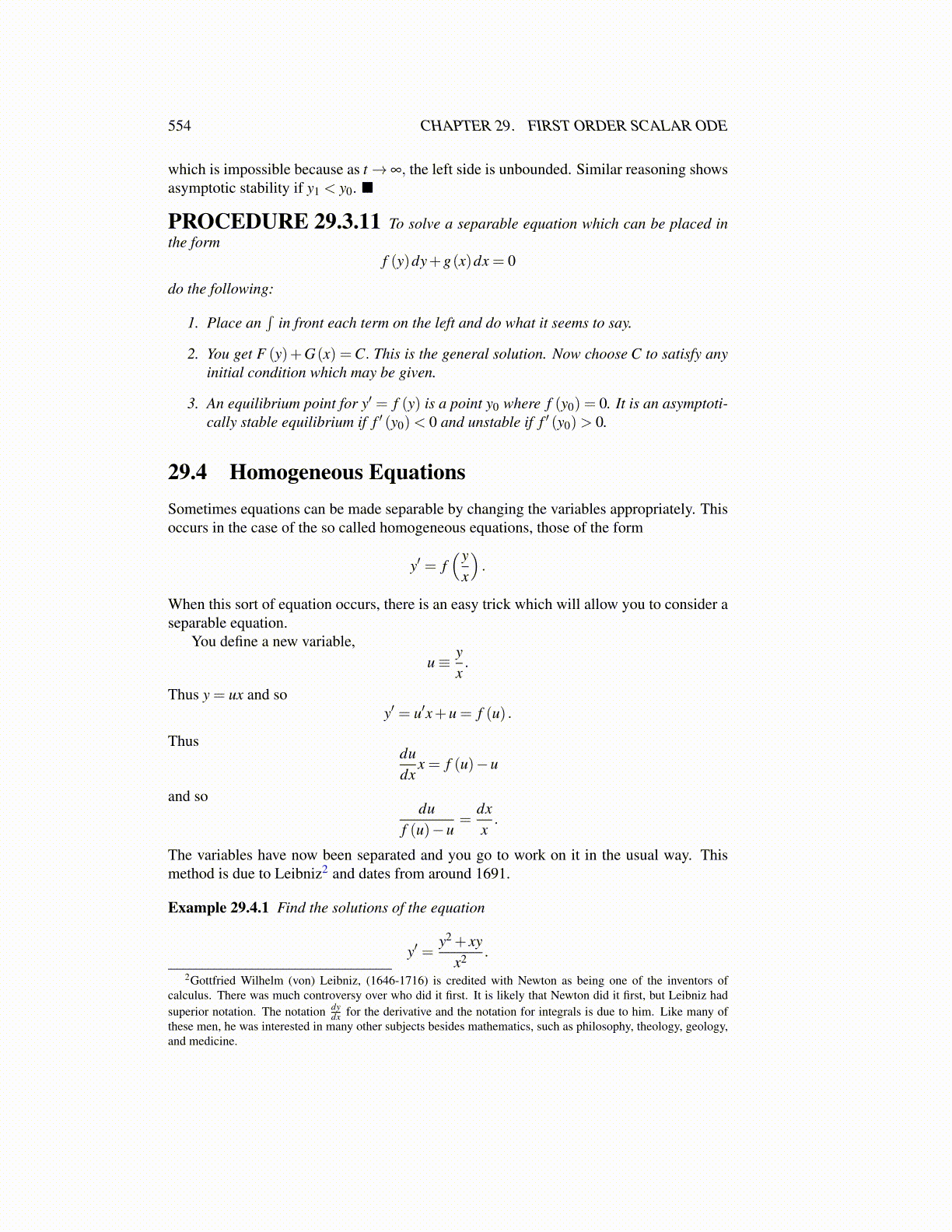
554 CHAPTER 29. FIRST ORDER SCALAR ODE
which is impossible because as t→∞, the left side is unbounded. Similar reasoning showsasymptotic stability if y1 < y0. ■
PROCEDURE 29.3.11 To solve a separable equation which can be placed inthe form
f (y)dy+g(x)dx = 0
do the following:
1. Place an∫
in front each term on the left and do what it seems to say.
2. You get F (y)+G(x) =C. This is the general solution. Now choose C to satisfy anyinitial condition which may be given.
3. An equilibrium point for y′ = f (y) is a point y0 where f (y0) = 0. It is an asymptoti-cally stable equilibrium if f ′ (y0)< 0 and unstable if f ′ (y0)> 0.
29.4 Homogeneous EquationsSometimes equations can be made separable by changing the variables appropriately. Thisoccurs in the case of the so called homogeneous equations, those of the form
y′ = f(y
x
).
When this sort of equation occurs, there is an easy trick which will allow you to consider aseparable equation.
You define a new variable,u≡ y
x.
Thus y = ux and soy′ = u′x+u = f (u) .
Thusdudx
x = f (u)−u
and sodu
f (u)−u=
dxx.
The variables have now been separated and you go to work on it in the usual way. Thismethod is due to Leibniz2 and dates from around 1691.
Example 29.4.1 Find the solutions of the equation
y′ =y2 + xy
x2 .
2Gottfried Wilhelm (von) Leibniz, (1646-1716) is credited with Newton as being one of the inventors ofcalculus. There was much controversy over who did it first. It is likely that Newton did it first, but Leibniz hadsuperior notation. The notation dy
dx for the derivative and the notation for integrals is due to him. Like many ofthese men, he was interested in many other subjects besides mathematics, such as philosophy, theology, geology,and medicine.